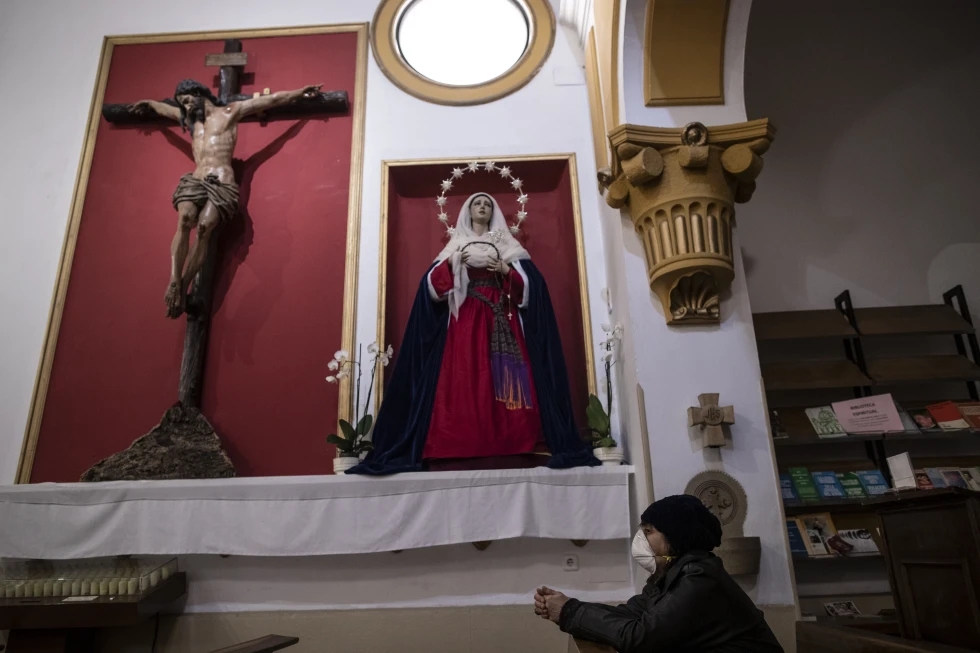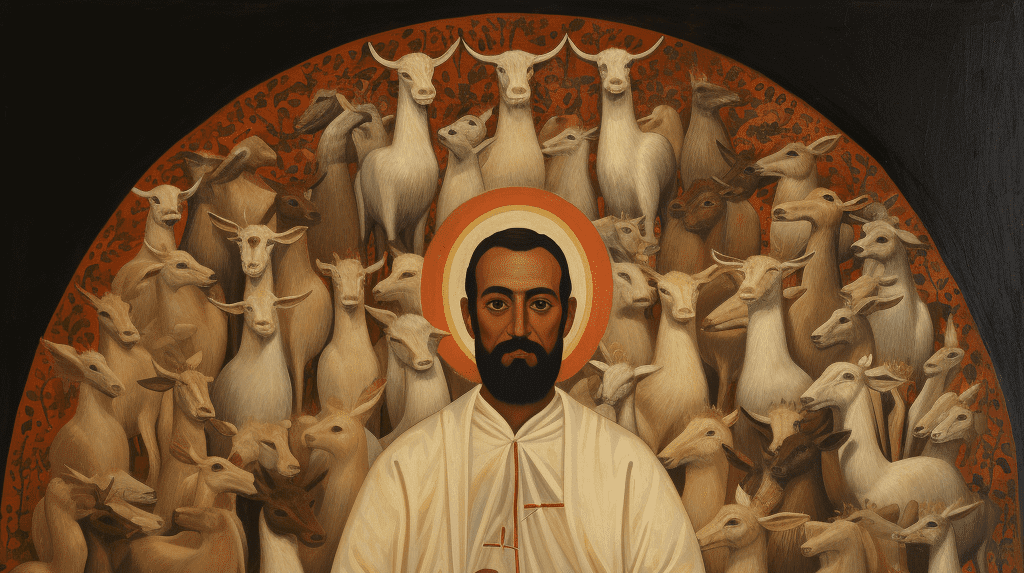“The Weekend Wanderer” is a weekly curated selection of news, stories, resources, and media on the intersection of faith and culture for you to explore through your weekend. Wander through these links however you like and in any order you like. Disclaimer: I do not necessarily agree with all the views expressed within these articles but have found them thought-provoking.

“Understanding wellness and mental health among pastors in 2024” – Shari Finnell in Faith & Leadership: “With the nation’s heightened awareness about mental health, congregational leaders have been regularly called upon to support individuals, families and communities experiencing challenges. But how are pastors themselves faring with mental health and overall wellness? That was among the questions recently posed by researchers involved in Exploring the Pandemic Impact on Congregations: Innovation Amidst and Beyond COVID-19, a five-year research project funded by Lilly Endowment Inc. ‘Every time we do a survey, we’re finding that congregations are not in the same spot where they were the previous time,’ said Scott Thumma, the director of the Hartford Institute for Religion Research, which is conducting the project. ‘Things are continuing to change in both predictable and unpredictable ways.’ When earlier research revealed a high rate of pastors considering leaving the ministry, Thumma said, the team decided to delve deeper into the underlying reasons.”

“What trees teach us about life, death and resurrection, part 1” – Matthew Sleeth at The National Christian Foundation blog: “I’ve always loved trees. I love their look, their shade, the sound of wind in their leaves, and the taste of every fruit they produce. As a grade-schooler, I first planted trees with my father and grandfather. I’ve been planting them ever since. Once, as I was training to become a doctor, my wife and I tree-lined the whole street where we lived. But a dozen years ago, when I offered to plant trees at our church, one of the pastors told me I had the theology of a tree-hugger. This was not meant as a compliment. The church was a conservative one. It believed that Scripture is the inspired, inerrant Word of God. That’s why we went there. As one member explained to me, ‘Once you get onto that slippery slope of liberalism, who knows where you’ll end up.’ My first reaction to the pastor’s comment was, ‘Maybe I’m wrong. Maybe God doesn’t care about trees.’ Back then, our whole family was new to Christianity. My daughter hadn’t yet married a pastor. My son wasn’t a missionary pediatrician in Africa, and I’d yet to write books on applied theology or preach at more than a thousand colleges and churches around the world. What did I know about the theology of trees? But ever since I encountered the gospel for the first time in my 40s, the Bible has been my compass. So when I was called a tree-hugger, I turned to Scripture to get my bearings.”

“Gender in Bible Translation: A Crucial Issue Still Mired in Misunderstanding” – David Brunn in Themelios: “This article argues that much of the controversy surrounding gender in Bible translation is unnecessary. One reason is that many of the discussions about this issue have focused almost exclusively on the way nonliteral versions translate gender, giving insufficient attention to the way gender is handled in versions that identify as literal. A careful, objective examination of both kinds of versions together will show that the two sides of this discussion are not as far apart as some have supposed. While there are differences between the various versions, this article will demonstrate that the most significant distinction between the way literal and nonliteral versions handle gender in translation lies in the frequency rather than the nature of the adjustments.”

“The Church Loses When Our Arts Communities Die” – Conor Sweetman in Ekstasis: “I can remember the moment small literary magazines entered my life and established a subtle but dominating influence. I was talking with my dad about some classes I was taking at the end of my undergraduate years, and I shared an idea that had recently popped into my head: ‘I want to start a magazine. I’ll invite some friends who like to write and are into photography to feature their work. I’ll print 10 or 20 copies and see what happens.’ Surprised, he pointed at a maroon-covered, finely printed journal lying on his desk, the word Image emblazoned across the top. Below the title, a description: Art. Faith. Mystery. As the dean of students at a Christian liberal arts university, he knew his way around a landscape that I was just beginning to roam. The direction of my life was permanently altered at that moment. I found a world that took seriously the things I loved: faith, books, imagination, the creation of culture, and the development of craft. It lit a fire in my chest.”

“Spain approves plan to compensate victims of Catholic Church sex abuse. Church will be asked to pay” – In APNews: “Spain on Tuesday approved a plan aimed at making reparation and economic compensation for victims of sex abuse committed by people connected to the Catholic Church. It also announced the future celebration of a public act of recognition for those affected and their families. The Minister of the Presidency and Justice, Félix Bolaños, said the plan was based on recommendations in a report by Spain’s Ombudsman last year. From that report, he said it was concluded that some 440,000 adults may have suffered sex abuse in Spain by people linked to the church and that roughly half of those cases were committed by clergy. Bolaños said the compensation would be financed by the church. But in a statement Tuesday, Spain’s Bishops Conference rejected the plan, saying it discriminated against victims outside of church circles.”

“Picturing Aphou, a Lost African Mystic” – Matthew Milliner in Comment: “When Evagrius’s disciple John Cassian brought this understanding to the Latin West, he cast Evagrius’s imageless form of prayer as superior to the contemplative practices of indigenous African desert simpletons. The standoff between the two parties is known as the Anthropomorphite Controversy, and it is worth examining in detail, especially as it is so frequently misunderstood, even by scholars who should know better. John Cassian is not the only figure who mentions this famous desert row. The Christian historian Socrates (380–450) relates that while those allied with Evagrius prioritized imageless prayer, ‘more simple ascetics’ took the position that God had a human form (hence ‘Anthropomorphites’)….But there are competing accounts of this dispute, and this is where the lost African mystic Aphou comes into play. Another source beyond Socrates, The Life of Apa Aphou of Pemdje, came to light in 1883. This biography relates that Aphou, a so-called Anthropomorphite monk, waited three days to gain an audience with Bishop Theophilus. Thereupon Aphou successfully convinced Theophilus to change his position. The Life of Apa Aphou (freshly translated here) suggests that Theophilus, rather than caving in to popular pressure, was properly convinced by superior reasoning. This work has caused several scholars to conclude that Socrates and John Cassian offered exaggerated accounts, and that the real issue at hand was the image of God in humans, and on this point the Anthropomorphites were rightfully resisting Origenism, which sometimes hesitated to assign to humans the image of God. In the same way that Evagrius’s theology has been rehabilitated through careful scholarly efforts, the detective work of several scholars—Paul Patterson most recently—has rehabilitated the Anthropomorphites as well. “
Music: Common Hymnal (featuring JonCarlos Velez, Jamie MacDonald, Dee Wilson), “The Kingdom Is Yours”